You don’t need to knock down walls or rip out floors to give your home a luxurious, elevated feel. Sometimes, it’s the subtle architectural details that create the biggest visual impact. These design tweaks don’t require major construction, but they instantly suggest intention, polish, and sophistication. Whether you’re prepping for resale or simply want your home to feel more refined, these 13 details can make a surprisingly big difference.
1. Crown Molding
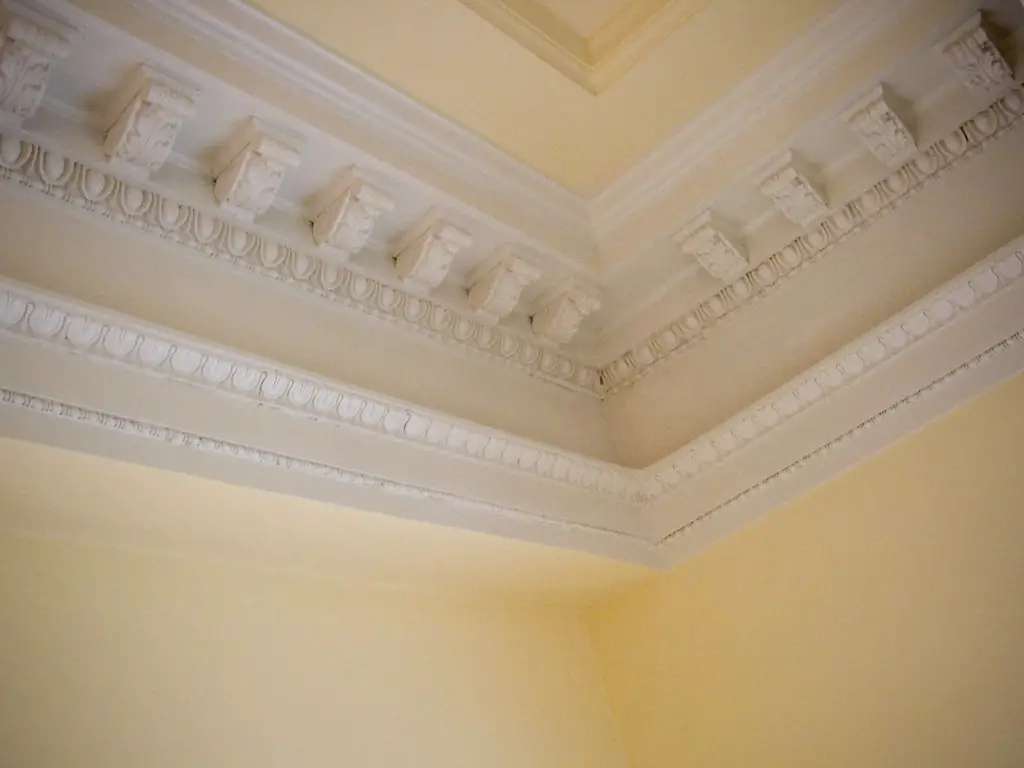
According to This Old House, crown molding is one of the most affordable upgrades that gives homes a more finished and upscale appearance. It draws the eye upward, emphasizing ceiling height and adding visual interest to even the simplest rooms. Traditional or modern styles can work, depending on your home’s aesthetic. Either way, this trim instantly signals craftsmanship.
It’s also a relatively simple weekend DIY project if you’re comfortable with a miter saw and nail gun. Pre-primed MDF versions are budget-friendly and easy to paint. Focus on key areas like living rooms, dining rooms, or entryways for maximum impact. Even just installing it on one wall—like above kitchen cabinets—can add depth.
2. Interior Window Grilles
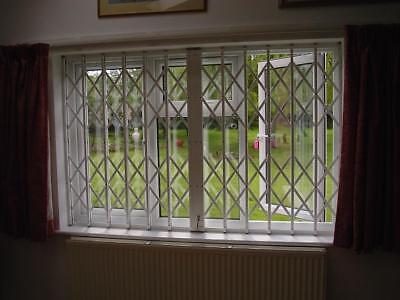
As noted by Pure Happy Home, grid-style window grilles (also called mullions) create the illusion of custom-designed windows without replacing your existing ones. They can be added with snap-in kits or peel-and-stick versions that mimic the look of traditional French or divided-light windows. The result is an elegant, classic detail that adds instant charm. It’s especially striking in front-facing rooms or breakfast nooks.
This trick works well in older homes to match the period style or in newer builds that need a bit more character. You can even paint them to match the trim for a seamless finish. They’re removable, renter-friendly, and surprisingly convincing. It’s a high-end look for a very low investment.
3. Box Trim or Picture Frame Molding

Better Homes & Gardens highlights box trim as a budget-conscious way to make plain walls feel custom and elegant. These simple rectangular moldings, arranged in evenly spaced grids, bring dimension and a nod to traditional architecture. When painted the same color as the wall, they create texture and depth without overwhelming a space. And if you want contrast, a crisp white trim against a bold wall can be incredibly striking.
Install them in entryways, hallways, or dining rooms to create a “paneled” effect without actual panels. They also look beautiful behind beds or sofas as a statement backdrop. You can find pre-cut kits or use inexpensive wood strips from a hardware store. It’s a timeless upgrade that reads far more expensive than it is.
4. Thick Baseboards
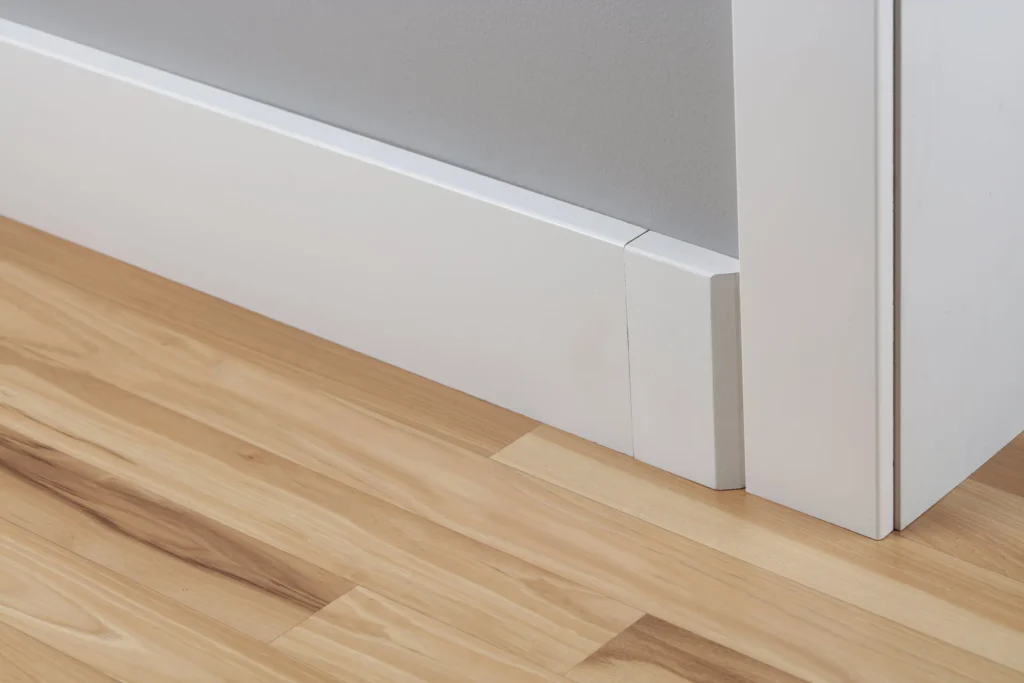
As Engineer Mommy notes, beefing up your baseboards is a subtle yet impactful way to make a space feel thoughtfully finished. Standard builder-grade trim often looks skimpy, but switching to taller or more decorative profiles gives your home a custom feel. It anchors the walls visually and complements other molding styles like crown or wainscoting. White painted baseboards especially pop against darker floors or bold-colored walls.
If replacing the whole baseboard isn’t feasible, you can fake the look by stacking a narrow trim piece above your existing baseboard and painting both the same color. This trick is easy to do and instantly elevates a room. It’s also renter-friendly if you go the temporary adhesive route. A small detail that yields big design payoff.
5. Arched Doorway Illusions
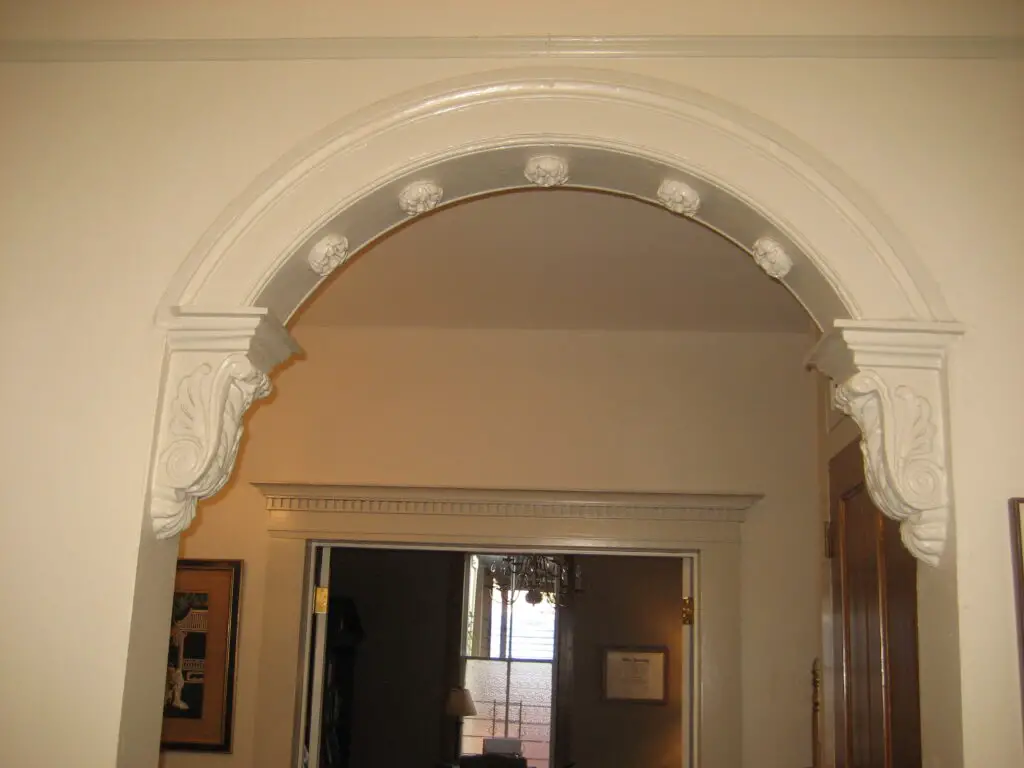
Even if you don’t have original archways, you can mimic the look with peel-and-stick arch decals or paint techniques. These add the softness and architectural charm of curves without needing a contractor. You can paint an arch over a doorway, hallway opening, or even above a headboard for a romantic, bespoke effect. The shape adds elegance and a vintage touch that feels curated.
This works especially well in minimalist or mid-century homes that lean on geometric contrast. Choose warm earth tones or muted pastels for a trendy yet timeless look. You can also install a lightweight MDF arch frame for a 3D option. Either way, it’s a smart shortcut to “designer” without demolition.
6. Faux Ceiling Beams

Adding faux ceiling beams is a clever way to create drama and warmth overhead without altering your home’s structure. Lightweight wood or foam beams can be mounted directly to the ceiling and stained to mimic rustic or industrial finishes. This detail gives the illusion of architectural heft and craftsmanship. It’s particularly impactful in rooms with vaulted or tall ceilings.
Even in smaller spaces, a few beams can visually elongate the ceiling and make it feel cozy but intentional. Use them to separate zones in an open-concept space or highlight a dining nook. They’re also great for adding contrast to white ceilings. For a more modern vibe, try painting them the same color as the ceiling for subtle dimension.
7. Door Trim Enhancements
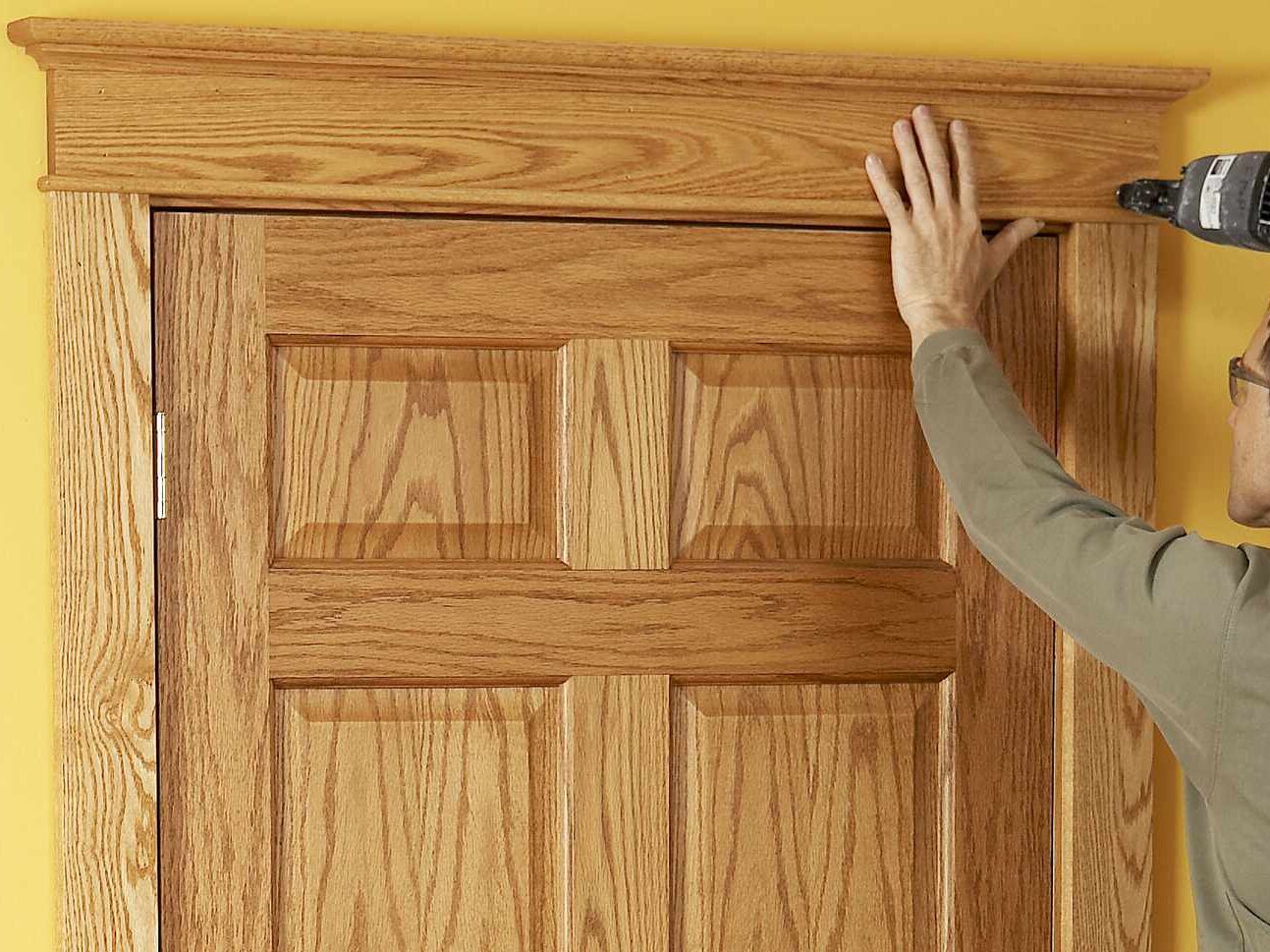
Swapping out flat, narrow door trim for wider or layered molding makes every doorframe feel more important. You can go full Craftsman style with flat stock trim or opt for colonial curves for something more ornate. This frames each doorway as an architectural feature, not just a passage. It also ties rooms together with consistency and style.
Even adding a simple header board above the doorway can dramatically change the vibe. If you’re hesitant, start with one visible area like a hallway or main entrance. Choose trim that coordinates with your baseboards for a polished effect. It’s a low-stakes upgrade with high visual return.
8. Interior Shutters
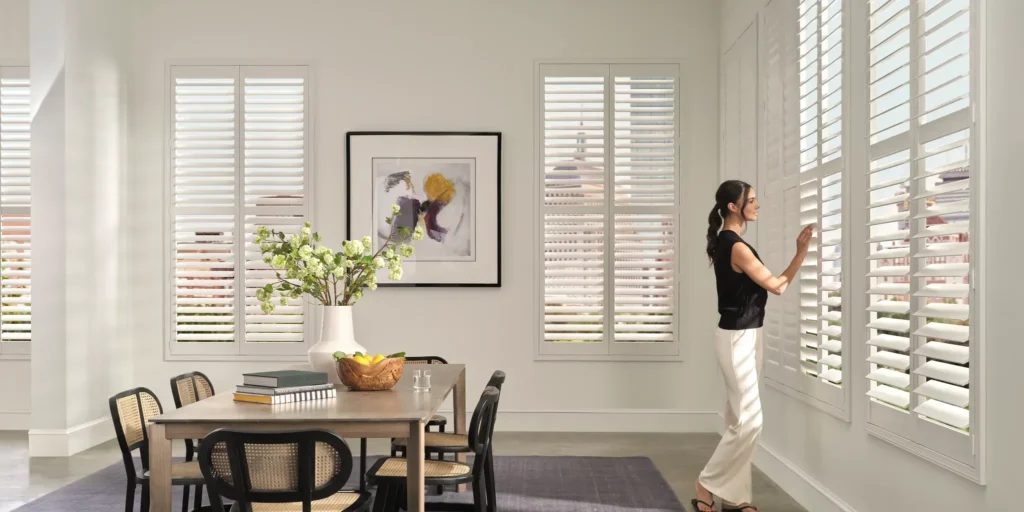
Interior shutters—especially café-style ones that cover just the bottom half of a window—add texture, charm, and a custom feel. They offer privacy without blocking all your natural light and create an Old World or Southern-inspired aesthetic. Painted white or stained wood, they bring structure to windows that blinds just can’t match. And unlike heavy curtains, they stay crisp and clean.
They’re perfect in kitchens, bathrooms, or breakfast nooks where you want control without fuss. Many home improvement stores sell DIY-friendly versions that mount inside the window frame. You can even match them to your wall or trim color for a monochromatic look. They’re functional and fashionable.
9. Ceiling Medallions
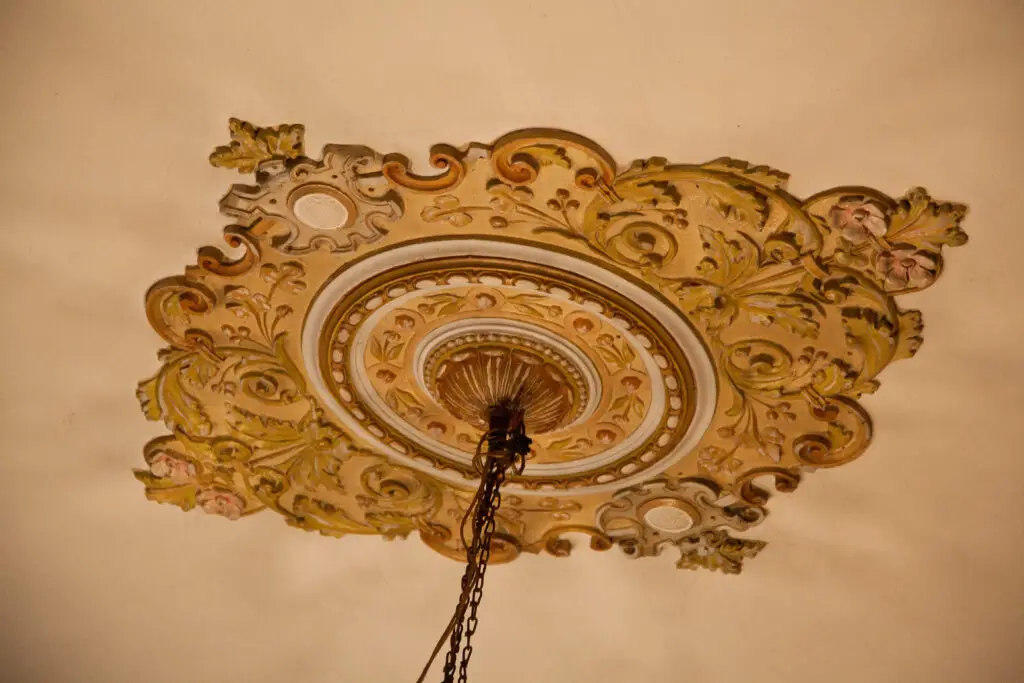
A ceiling medallion around a light fixture gives the illusion of age and craftsmanship, even in newer homes. These round decorative plates come in classic or modern styles and are usually made from lightweight polyurethane. Paint them to match the ceiling for subtle elegance or contrast them for drama. They instantly make chandeliers and pendants feel more intentional.
They’re also surprisingly easy to install with adhesive and a few finishing nails. Use them in dining rooms, foyers, or bedrooms with statement lights. The medallion doesn’t have to be ornate—simple shapes work too. It’s a vintage-inspired detail that elevates from above.
10. Tall Wainscoting
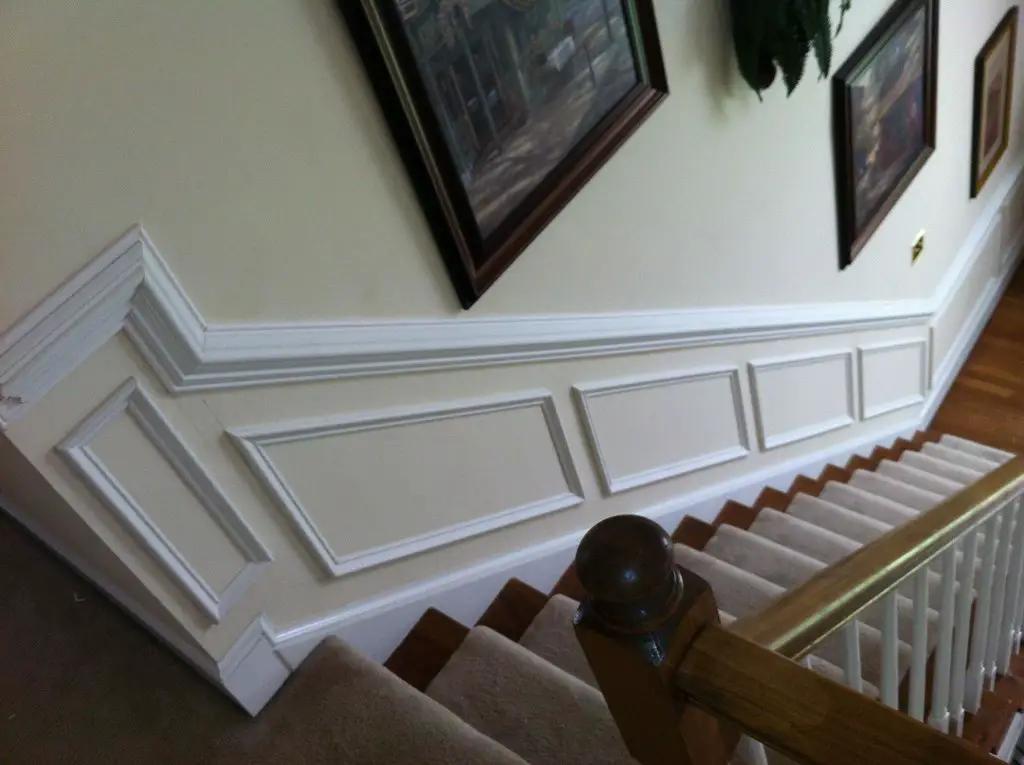
Wainscoting that goes up two-thirds of the wall instead of just chair rail height gives rooms a sense of stature and balance. It creates a strong visual base and makes ceilings feel taller by drawing the eye upward. Painted in the same shade as the trim, it blends in while still adding definition. If you want to go bold, use a darker color below and a light tone above.
Wainscoting works especially well in dining rooms, stairways, or long hallways. You can use beadboard, board-and-batten, or shaker styles depending on your home’s character. It’s easy to install and even easier to customize with color or wall treatments. Add a picture ledge on top for extra function and charm.
11. Door Hardware Upgrades
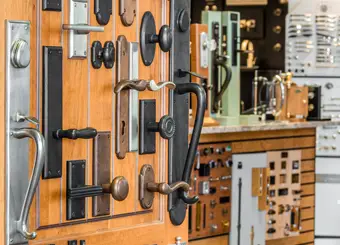
Swapping out doorknobs and hinges for matte black, brass, or antique-style finishes creates cohesion and polish across your home. This small change makes every door feel thoughtfully styled and far from builder-grade. Coordinating the finish across cabinetry, lighting, and doors adds instant luxury. It’s like adding jewelry to your house.
Look for lever handles or square backplates for a modern look, or crystal knobs for vintage charm. This update is also surprisingly budget-friendly, especially when done gradually room by room. Don’t forget closet and pantry doors—they deserve a glow-up too. It’s subtle, but guests will notice the elevated detail.
12. Recessed Niche Shelves

Built-in-style niche shelving can be mimicked with wall-mounted frames or faux boxed-in panels. These give you a space to display art, candles, or books in a way that feels designed—not just placed. You can add a sconce above the niche for a museum-like effect. The look is clean, sculptural, and sophisticated.
Even a single faux niche can break up a blank hallway or accent wall. Paint the inside a slightly darker or glossier shade for contrast. If you’re not ready to commit to a full cutout, use floating shelves within a painted box to fake it. It’s an instant architectural statement.
13. Framed Interior Windows or Pass-Throughs
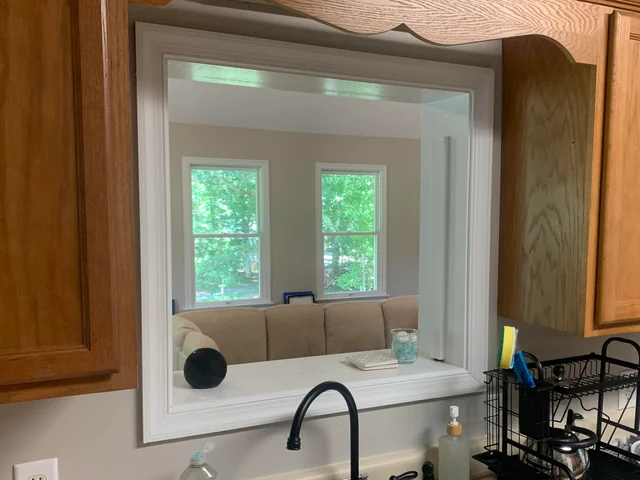
Adding trim or faux framing around interior cut-outs or open pass-throughs helps them feel like a designed feature rather than an afterthought. Whether it’s between a kitchen and living room or a hallway and den, that extra frame gives the illusion of custom architecture. You can even create a faux window between two rooms using glass panes and decorative trim. It enhances light flow and makes the space feel layered.
Use molding that matches nearby trim to make everything cohesive. If you’re bold, paint the inside frame a contrasting color for a punchy detail. This works especially well in apartments or smaller homes where open flow is key. It’s an elevated look with zero renovation required.
